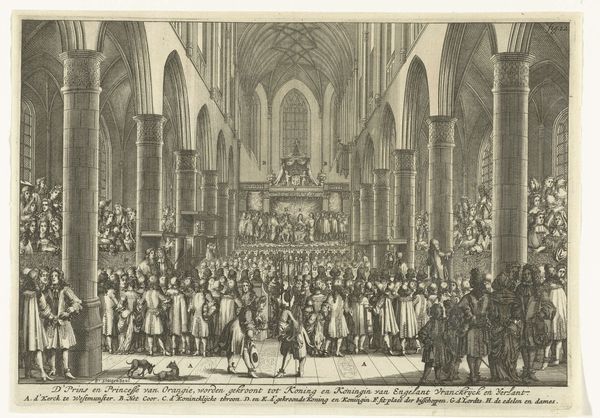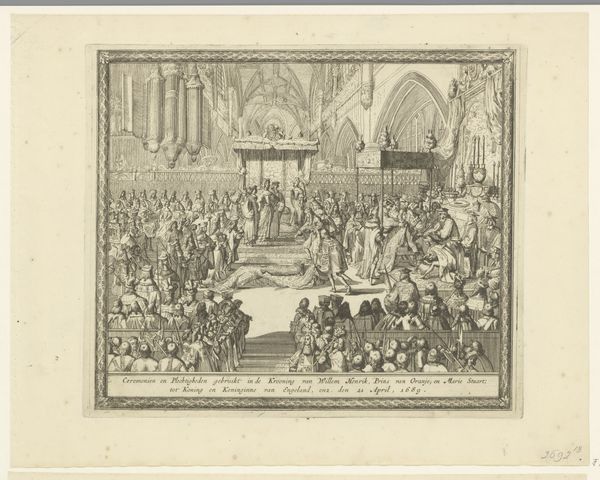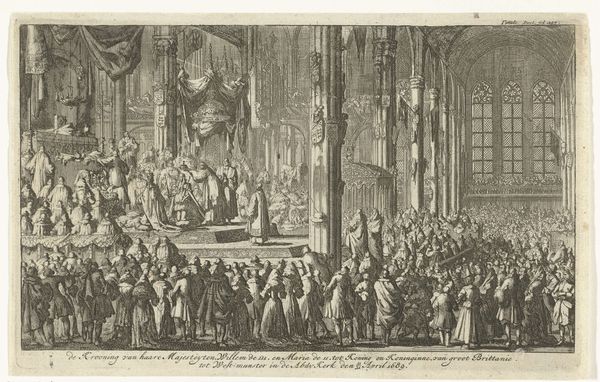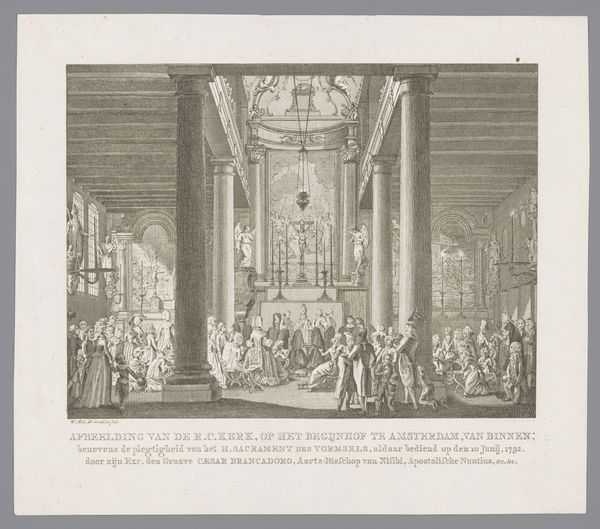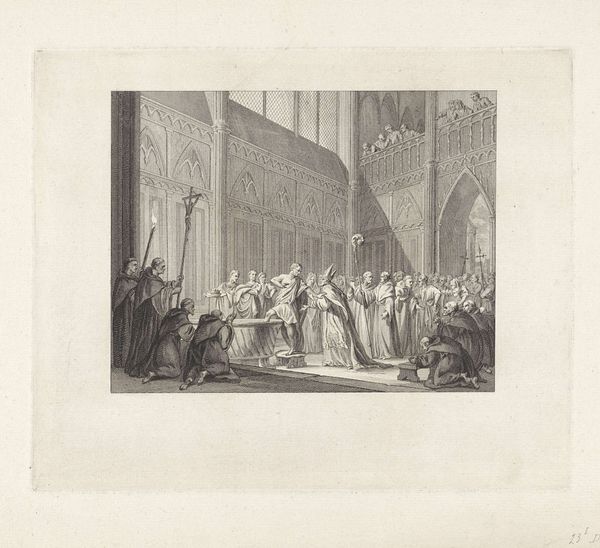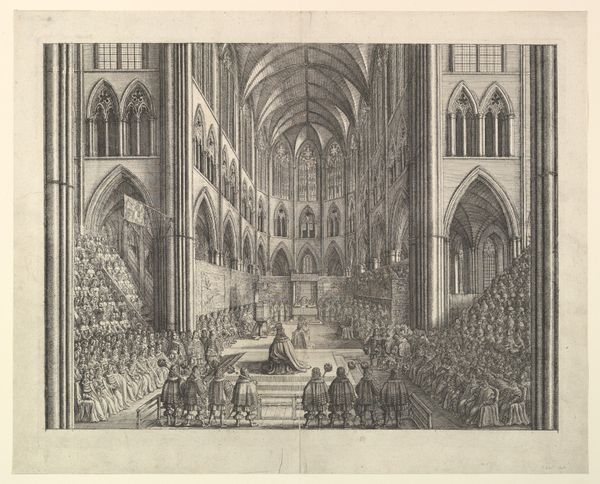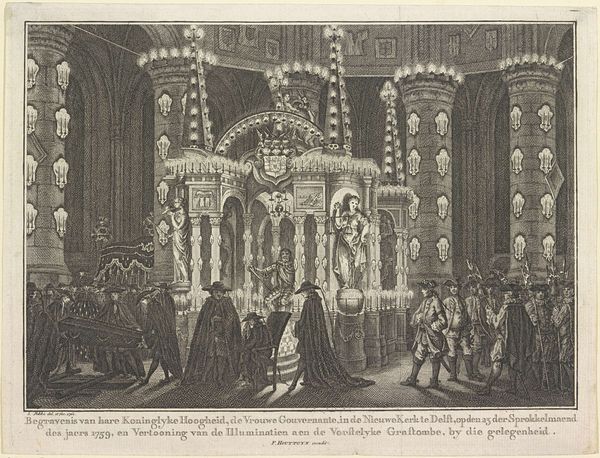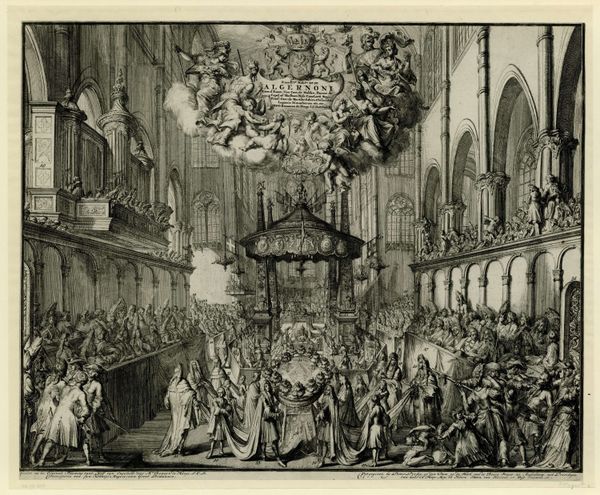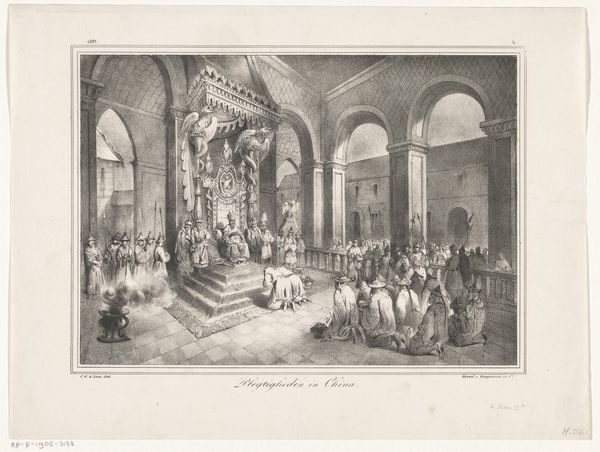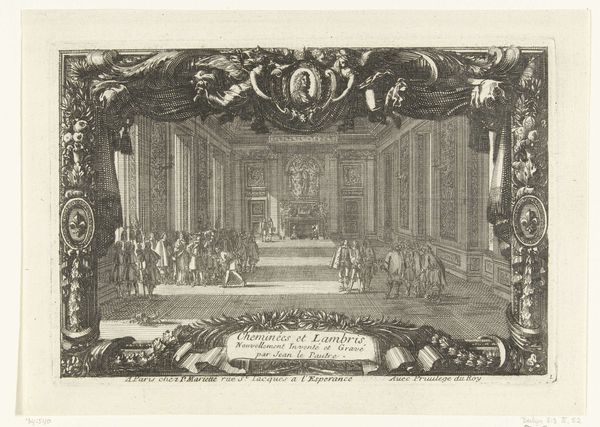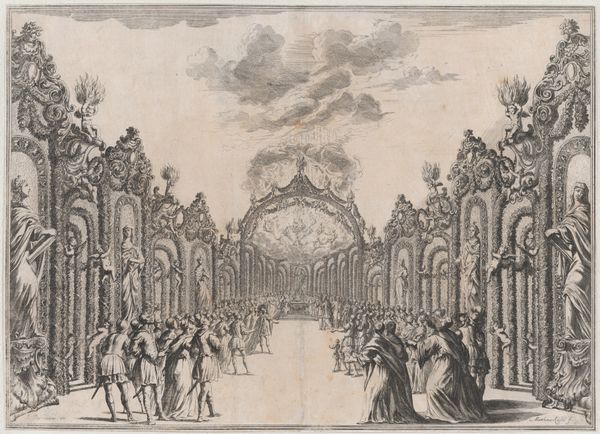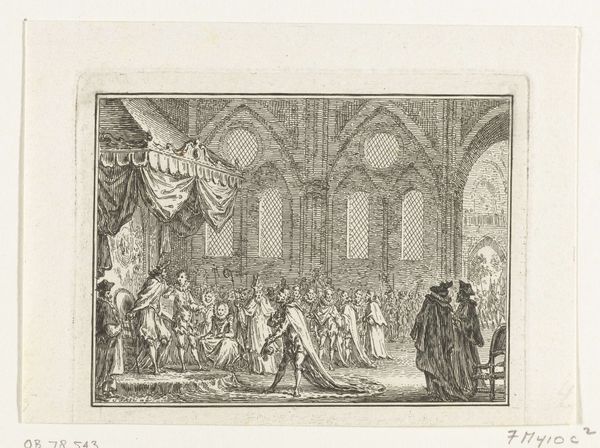![Crowning of Queen Victoria, June 28, 1838 [right half] by Anonymous](/_next/image?url=https%3A%2F%2Fd2w8kbdekdi1gv.cloudfront.net%2FeyJidWNrZXQiOiAiYXJ0ZXJhLWltYWdlcy1idWNrZXQiLCAia2V5IjogImFydHdvcmtzL2ZhMzJlNGRmLWVkZmItNGFlMC1iM2RjLTVhODZmZmNiODkxZi9mYTMyZTRkZi1lZGZiLTRhZTAtYjNkYy01YTg2ZmZjYjg5MWZfZnVsbC5qcGciLCAiZWRpdHMiOiB7InJlc2l6ZSI6IHsid2lkdGgiOiAxOTIwLCAiaGVpZ2h0IjogMTkyMCwgImZpdCI6ICJpbnNpZGUifX19&w=3840&q=75)
Crowning of Queen Victoria, June 28, 1838 [right half] c. 19th century
0:00
0:00
print, engraving
#
portrait
# print
#
romanticism
#
19th century
#
history-painting
#
academic-art
#
engraving
Copyright: National Gallery of Art: CC0 1.0
Curator: "Crowning of Queen Victoria, June 28, 1838," an engraving from around the 19th century by an anonymous artist. What strikes you first about this print? Editor: All those faces peering out from the balconies—a visual manifestation of the gaze of the establishment, quite literally looking down upon the newly crowned monarch. The scale of the architectural interior reduces Queen Victoria to almost a miniature figure. Curator: Precisely. The composition directs the eye through a receding perspective. Notice the complex interplay of light and shadow, meticulously rendered to create a sense of depth and grandeur. The artist's skillful use of hatching and cross-hatching brings forth volume to every form. Editor: Grandeur, yes, but at what cost? Think about the social stratification inherent in such a spectacle. All the supposed wealth and luxury represented, in a city where such profound inequalities existed. It begs the question: who is this display really for? Curator: It's certainly an exercise in power display, designed to project stability, hierarchy, order and continuity through the composition; there are strong vertical and horizontal lines throughout the architectural and figure compositions. The balance helps communicate structure and command. Editor: Indeed. This print offers an insight into how power manufactures consent through visual strategies. We can see that here; consider the weight of tradition represented by that Gothic architecture behind Victoria, with what will become the modern Empire. How the pageantry legitimises and obscures at once. Curator: Thank you. A reminder of how images speak beyond aesthetics and technique. Editor: A vital exercise to avoid the trap of art existing in a vacuum.
Comments
No comments
Be the first to comment and join the conversation on the ultimate creative platform.
